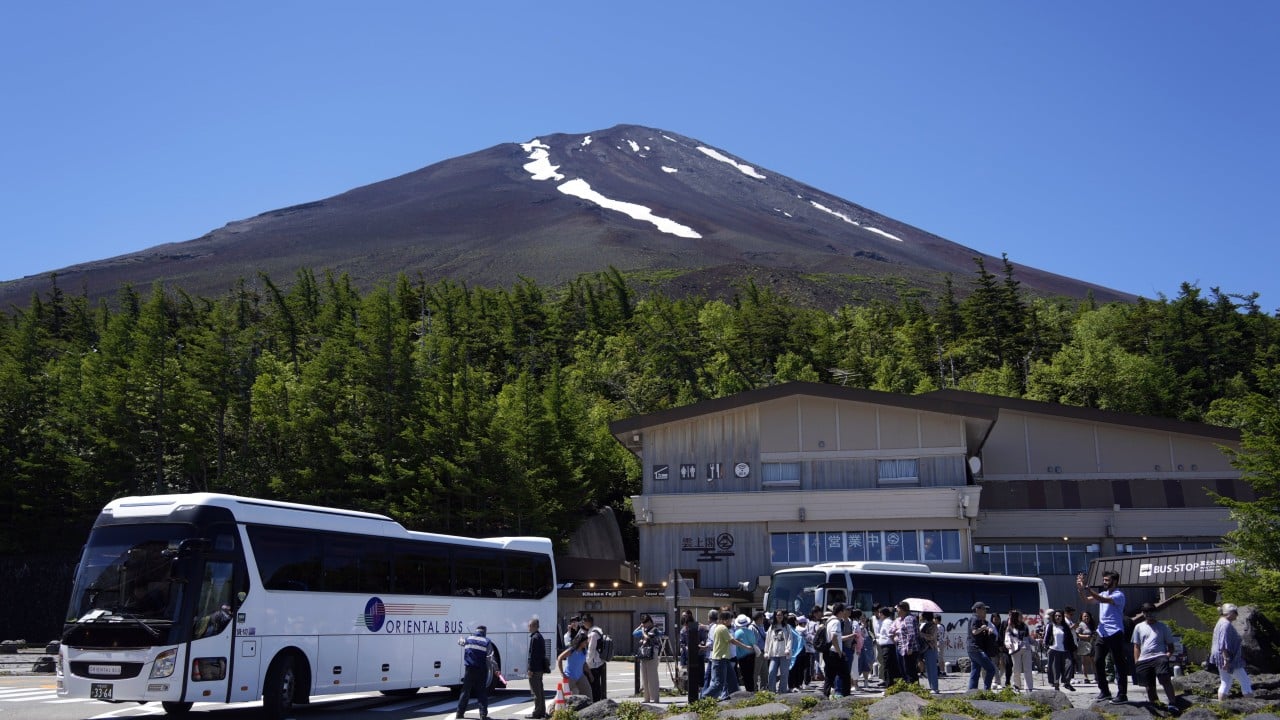A Hong Kong civil servant has died in an attempt to scale Mount Fuji, the fifth death on the mountain in less than two weeks.
The Hong Kong Immigration Department confirmed it had been asked for help and that it had contacted the commissioner of the foreign ministry’s office in Hong Kong and the Chinese embassy in Japan to follow up on the incident.
A spokesman for the department said support was also being given to the dead man’s family.
The Trade and Industry Department confirmed the victim was a staff member and expressed sorrow over his death.
It had contacted his family to extend its condolences and would provide appropriate assistance, a spokesman said.
Japanese media said the man, whose first name was Lawrence, and his wife began their ascent from the fifth station on the popular Yoshida Trail route on the Yamanashi prefecture side of the landmark at about 1.30pm on Monday.
But when they reached the eighth station, at about 3,100 metres (10,170 feet) at around 8.30pm, the man complained of feeling unwell and later lost consciousness.
Fellow climbers alerted mountain station staff, who used a specialist vehicle to transport the man to a nearby medical station.
But a doctor pronounced the man dead.

Japanese police have launched an investigation and told media the incident was the first reported fatality among climbers on the Yamanashi prefecture side of the 3,776-metre Mount Fuji since it opened for the summer season on July 1.
Three bodies were discovered about three-quarters of the way up the mountain on June 26, all near its crater but in different locations.
Professional climber Keita Kurakami, 38, died in hospital on the same day after being found unconscious by police as he climbed the mountain from Yamanashi prefecture.
Chung Kin-man, a veteran mountaineer, told the Post that Hongkongers heading to climb Japan’s tallest mountain, an undertaking that has become more popular in recent years, should be wary of altitude sickness.
Unlike summiting peaks in Hong Kong, which can be done in a few hours, Chung said the hike up Mount Fuji was an ascent that could take a significant amount of time and involve staying over in mountain huts.
He said altitude sickness could start affecting hikers once they ascended to more than 2,000 metres.
“Individuals have the best understanding of their own health conditions and they should check with their doctors whether they are suitable to hike to such high altitudes,” he said.
“Altitude sickness hits everyone at a different speed and the body needs time to adapt. If they start feeling symptoms like headaches, nausea or shortness of breath, they should inform their fellow hikers and rest.”
Mount Fuji has become increasingly crowded during the summer hiking season, raising concerns over safety and environmental damage.
To ease congestion on the Yoshida Trail, the preferred route for most hikers, the Yamanashi region capped daily entries to 4,000 people, who are charged US$13 each, under a new online booking system introduced for the July-September hiking season.
Each day, at least 1,000 places will be kept free for on-the-spot entry.
Mount Fuji is covered in snow most of the year, but in the summer more than 220,000 visitors trudge up its steep, rocky slopes, many climbing through the night to see the sunrise.


